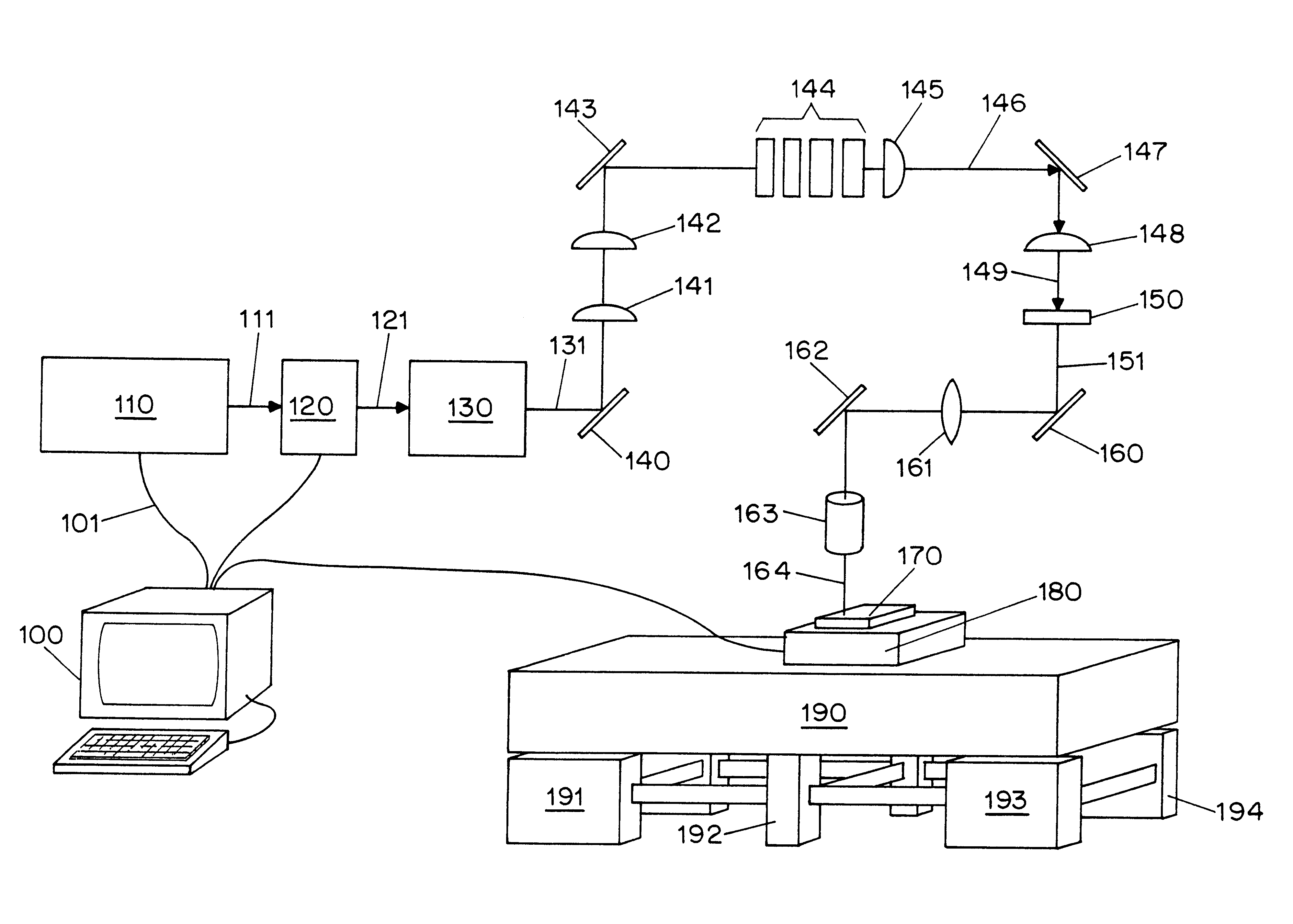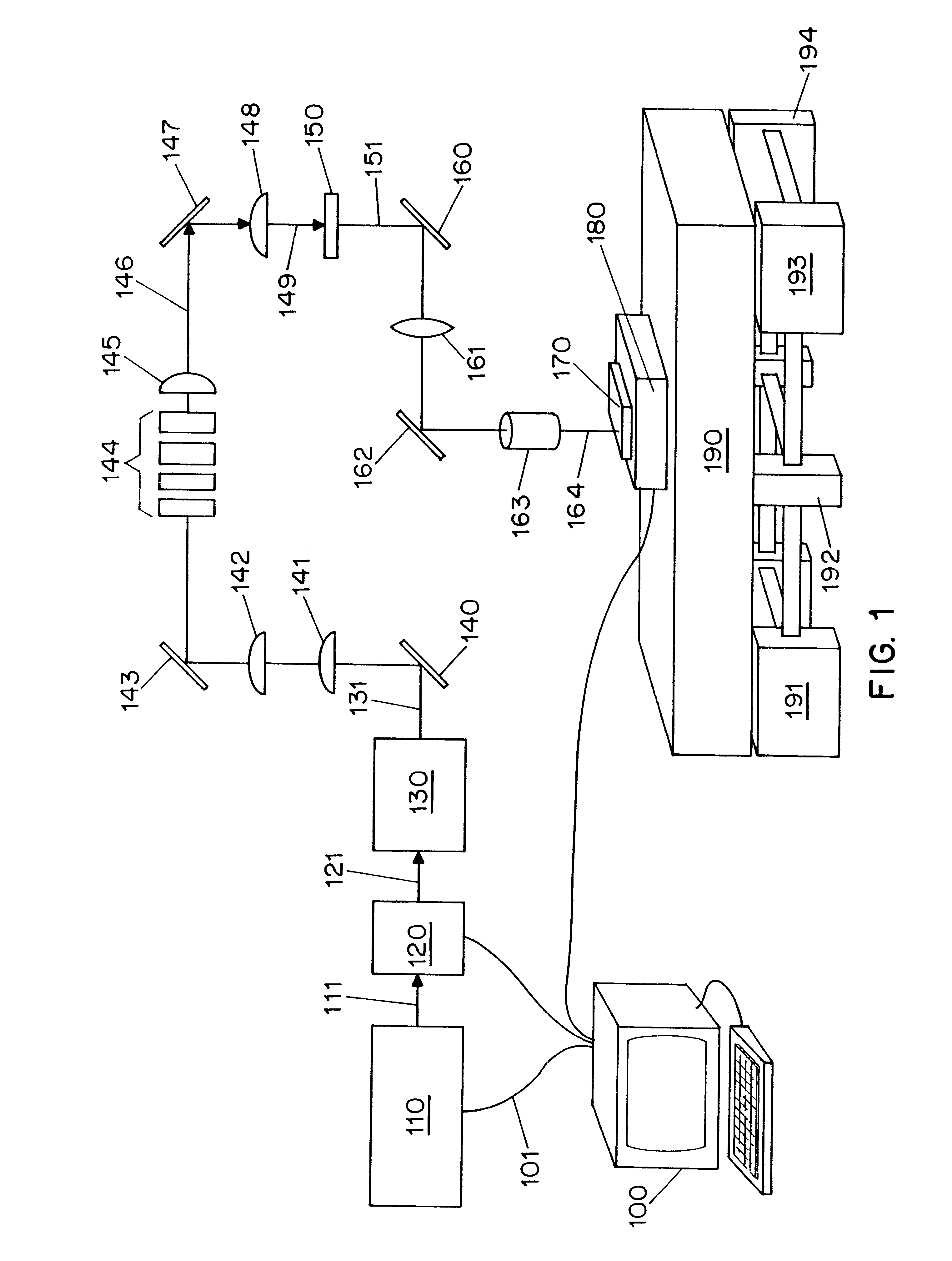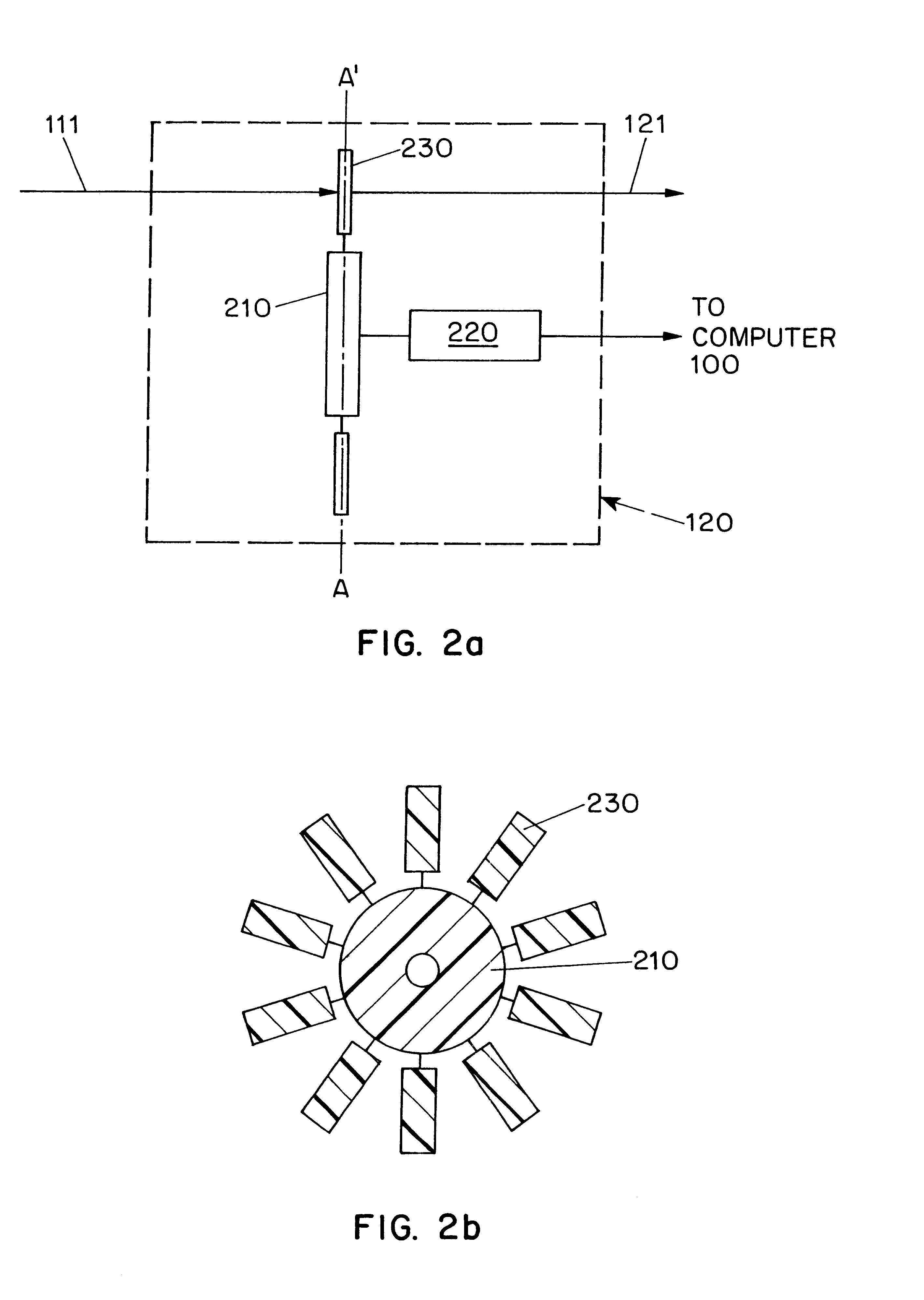Systems and methods using sequential lateral solidification for producing single or polycrystalline silicon thin films at low temperatures
a technology of polycrystalline silicon and sequential solidification, applied in the direction of coatings, transistors, chemical vapor deposition coatings, etc., can solve the problems of poor and non-uniform devices, low manufacturing yield, and difficulty in achieving the effect of high-temperature solidification
- Summary
- Abstract
- Description
- Claims
- Application Information
AI Technical Summary
Benefits of technology
Problems solved by technology
Method used
Image
Examples
Embodiment Construction
Referring to FIG. 1, a preferred embodiment of the present invention will be described. An excimer laser 110, which may be Lambda Physik Model LPX315i, generates a laser beam 110 which passes through an energy density modulator 120, described with greater particularity below. While the Lambda Physik excimer laser generates an ultraviolet beam at a wavelength of 308 nm, more powerful excimer lasers or excimer lasers generating beams at other wavelengths may be utilized. In accordance with the present invention, the modulator 120 acts to rapidly change the energy density of laser beam 110. The excimer laser 110 and energy density modulator 120 are each linked by a standard computer interface connection 101 to a computer 100 to effect control of the energy density modulator 120 in accordance with the timing of laser pulses generated by laser 110. The modulated laser beam 121 is directed through beam attenuator and shutter 130, which permit fine control over the fluence of the modulated...
PUM
| Property | Measurement | Unit |
|---|---|---|
| Attenuation coefficient | aaaaa | aaaaa |
| Energy density | aaaaa | aaaaa |
Abstract
Description
Claims
Application Information
 Login to View More
Login to View More - R&D
- Intellectual Property
- Life Sciences
- Materials
- Tech Scout
- Unparalleled Data Quality
- Higher Quality Content
- 60% Fewer Hallucinations
Browse by: Latest US Patents, China's latest patents, Technical Efficacy Thesaurus, Application Domain, Technology Topic, Popular Technical Reports.
© 2025 PatSnap. All rights reserved.Legal|Privacy policy|Modern Slavery Act Transparency Statement|Sitemap|About US| Contact US: help@patsnap.com



